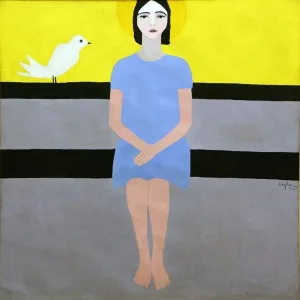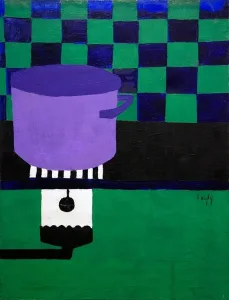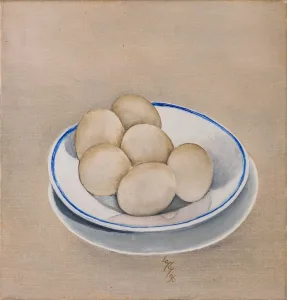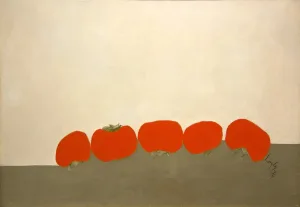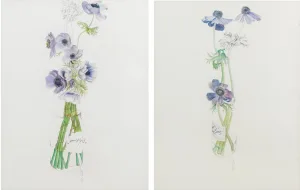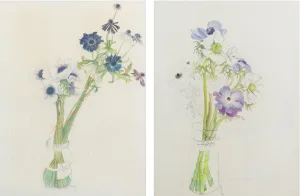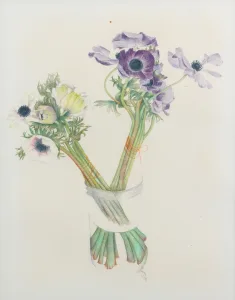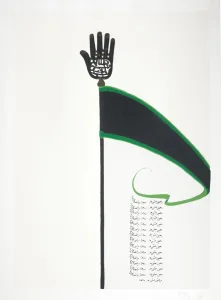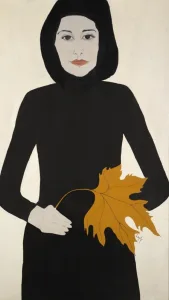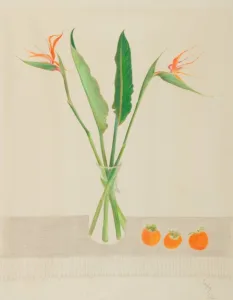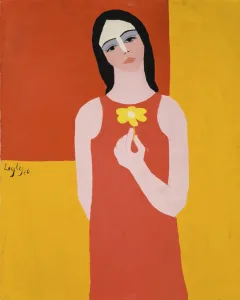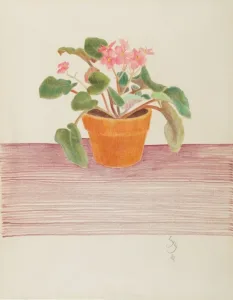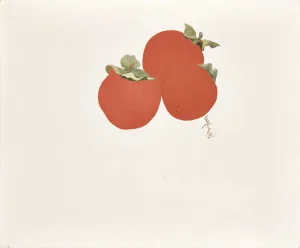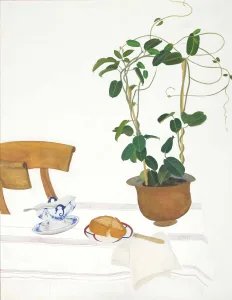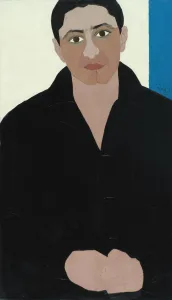
Leyly Matine Daftary
b. 1937 / Tehran
Leyly Matine-Daftary (1937-2007) was one of the most influential Iranian artists of the 20th century. She was born in Tehran into a prominent political family, as the daughter of Ahmad Matin-Daftari, a former prime minister of Iran, and the granddaughter of Mohammad Mossadegh, another prime minister who led the nationalization of the oil industry.
Matine-Daftary studied at the Slade School of Fine Art in London, where she developed her distinctive style of painting that combined elements of Eastern and Western art. She returned to Iran in the late 1950s and became a lecturer at the Fine Arts Faculty of Tehran University. She also participated in several national and international exhibitions, such as the Tehran Biennale, the Shiraz Arts Festival, and the Salon d’Automne in Paris.
Matine-Daftary's paintings are characterized by flat surfaces, geometric shapes, vibrant colors, and abstract forms that convey emotions and meanings. She was inspired by Persian miniatures, Islamic architecture, calligraphy, and poetry, as well as by modernist movements such as cubism, expressionism, and surrealism. She often used symbols and motifs from Iranian culture and history, such as flowers, birds, horses, and women.
Matine-Daftary was not only an artist but also an art educator and promoter. She founded the Iranian Centre for Modern Art in 1971, which aimed to introduce contemporary Iranian art to the public and to support young artists. She also organized workshops, seminars, and publications on various aspects of art and culture.
Matine-Daftary left Iran after the 1979 Islamic Revolution and settled in Paris, where she continued to paint until her death in 2007. Her works are part of many private and public collections around the world, such as the Tehran Museum of Contemporary Art, the British Museum, and the Asia Society Museum. She is widely regarded as a pioneer of Iranian modernism and a representative of Iranian women artists.

